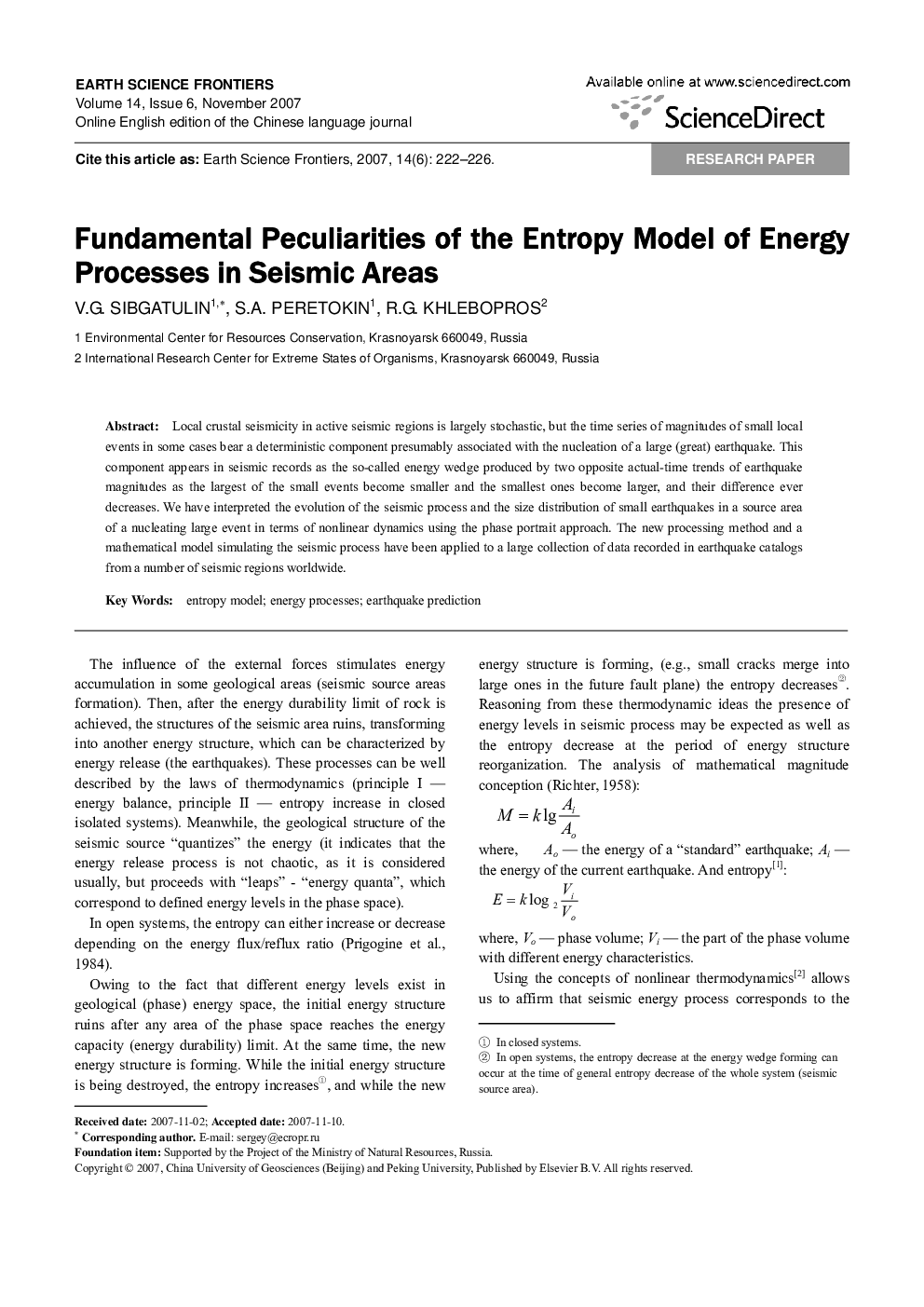| Article ID | Journal | Published Year | Pages | File Type |
|---|---|---|---|---|
| 4701582 | Earth Science Frontiers | 2007 | 4 Pages |
Local crustal seismicity in active seismic regions is largely stochastic, but the time series of magnitudes of small local events in some cases bear a deterministic component presumably associated with the nucleation of a large (great) earthquake. This component appears in seismic records as the so-called energy wedge produced by two opposite actual-time trends of earthquake magnitudes as the largest of the small events become smaller and the smallest ones become larger, and their difference ever decreases. We have interpreted the evolution of the seismic process and the size distribution of small earthquakes in a source area of a nucleating large event in terms of nonlinear dynamics using the phase portrait approach. The new processing method and a mathematical model simulating the seismic process have been applied to a large collection of data recorded in earthquake catalogs from a number of seismic regions worldwide.
